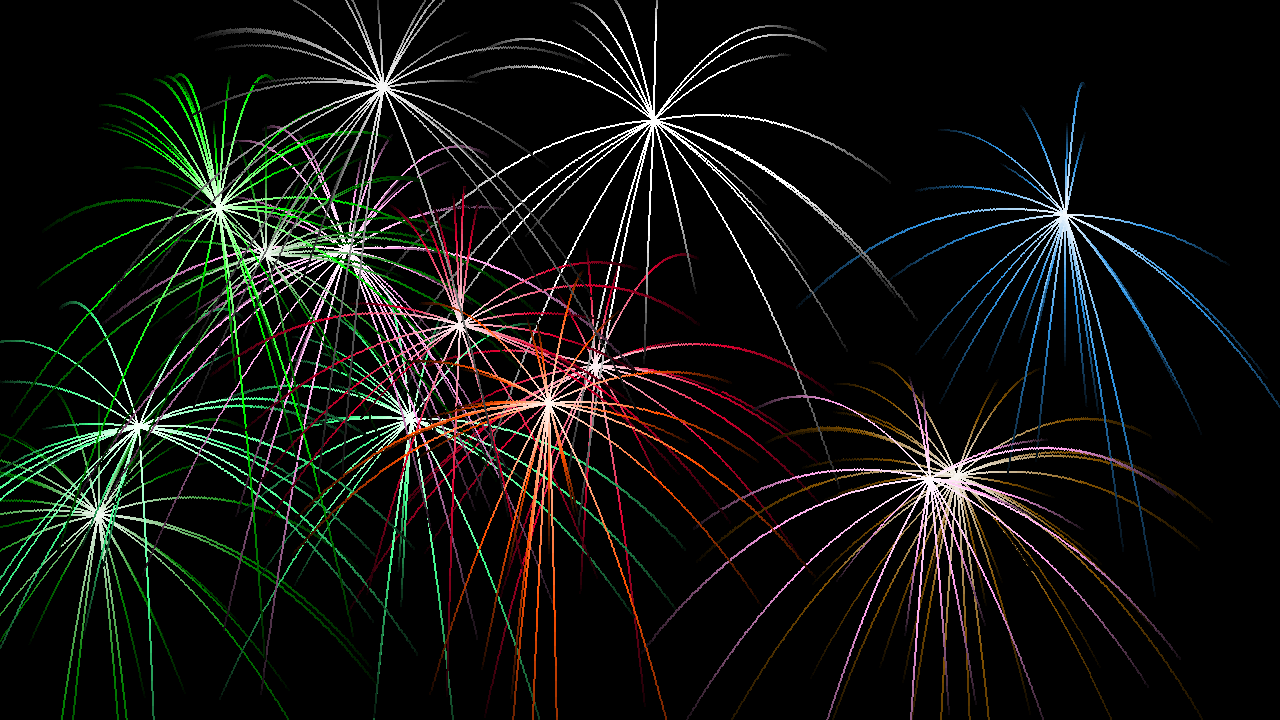
Logo Fireworks
This Logo program uses hatchlings to create simple 2D fireworks. The turtle’s model is changed into an icosphere to simulate a launching firework, and then more hatchlings are used to create the starburst. The trails are merged back into the main turtle ‘track’ and the hatchlings are terminated, leaving the rendered drawing on-screen at the conclusion of the program.
Read through the code (and pay particular attention to the ;comments) to see how the program works. It is made up of two procedures: fireworks, and burst.
TO fireworks
;simple 2D fireworks
reset
hideturtle
repeat 5 + random 10 [
;launch at least 5 but not more
;than 14 fireworks
penup
;pull up the turtle's pen
home
;return to [0 0 0]
raise repcount
;raise the turtle so its lines
;don't overlap
sety -100
;set the turtle's y position to
;-100
hatch [left -60 + random 121 burst]
;hatch a new turtle, turn that
;turtle left some random value
;between -60 (same as right 60)
;and 60 degrees, then execute the
;burst procedure
wait 30 + random 31
;wait between one half and one
;second before launching the next
]
;repeat until all fireworks launched
END
TO burst
;a single firework 'burst'
;originally called 'firwork' but
;that was a little confusing!
penup hideturtle
newmodel "firework [icosphere 1]
setmodel "firework
;create and use a simple model
;made from a single icosphere
randomfillcolor
;set a random fill color
;models inherit the fill color
;if not otherwise set inside
;the model
showturtle
repeat 100 + random 601 [
;travel between 200 and 700
;turtle steps
forward 1 - 0.002 * repcount
;move forward 1 step minus
;a fraction based on the current
;loop iteration. This has the
;effect of slowing us down
;over time (reduce velocity)
sety ypos - 0.0005 * repcount
;change the y position of the
;turtle a fraction based on the
;current loop iteration, simulating
;very simple gravity
sleep 2
;take a little nap
]
;repeat until finished travelling
setpencolor fillcolor
;set the pen color to the fill color
hideturtle
repeat 20 + random 21 [
;create between 20 and 40 fragments
raise 0.01
;ensures seperation between
;overlapping lines
hatch [
pendown
;draw lines
right random 360
;turn right between 0 and 359
;degrees
make "steps 30 + random 71
repeat :steps [
;travel between 30 and 100
;turtle steps
;setpenshade -15 + repcount / 5
setpenshade -15 + 30 * (repcount / :steps)
;set the pen shade based on the
;loop iterations
fd 1 - 0.002 * repcount
;move forward minus "drag"
sety ypos - 0.01 * repcount
;apply fake gravity
]
merge
;merge the hatchling's track
;(output) into the track of its
;permanent ancestor, in this case
;myrtle
]
;done with hatchling
]
;repeat until finished
END


















